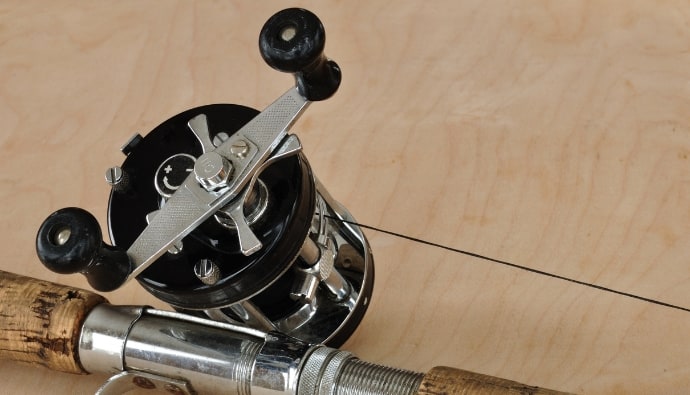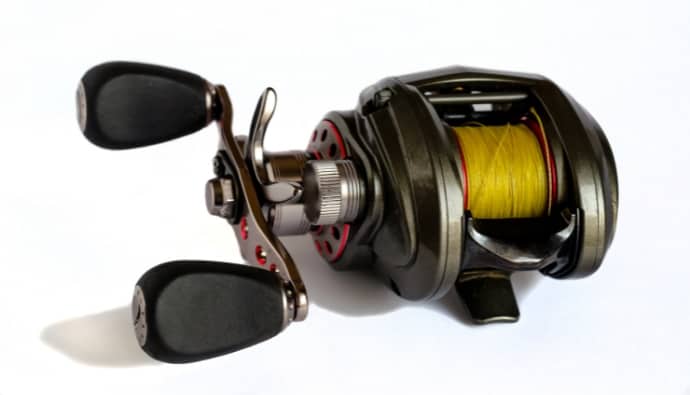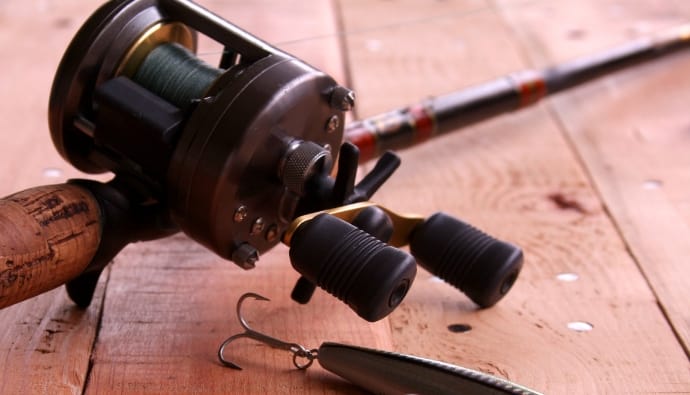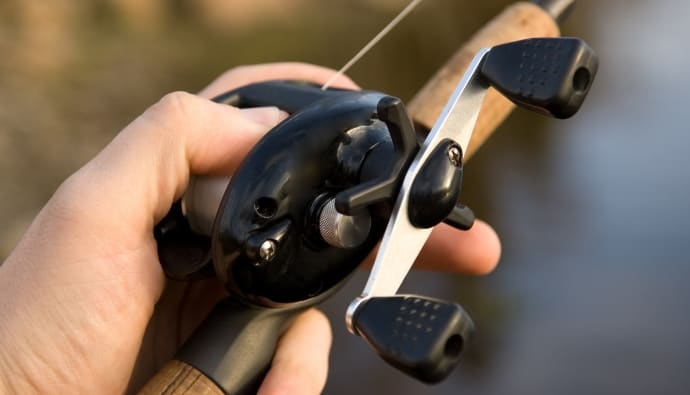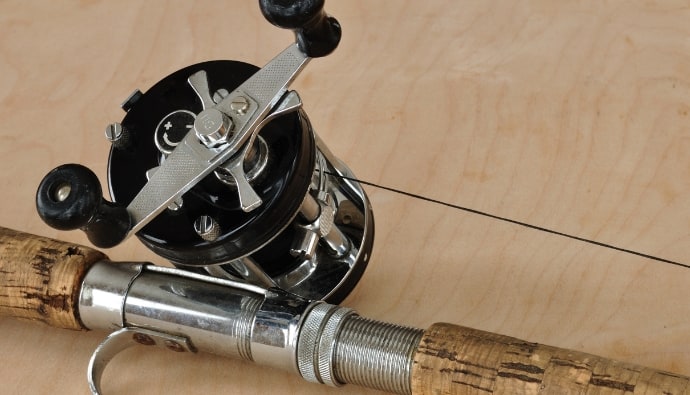Setting up your fishing tackle properly is key to having a successful fishing trip. From your fishing rod to your reel, line, and bait, it is important that everything is in place to get the big catch
. A spinning reel is one of the most common fishing reels among anglers. This is due to the ease of usage and versatility that it offers. Putting the right amount of line on your spinning reel goes a long way in determining how effective your tackle is.
In this article, we will discuss the best way to determine how much line to put on a spinning reel.
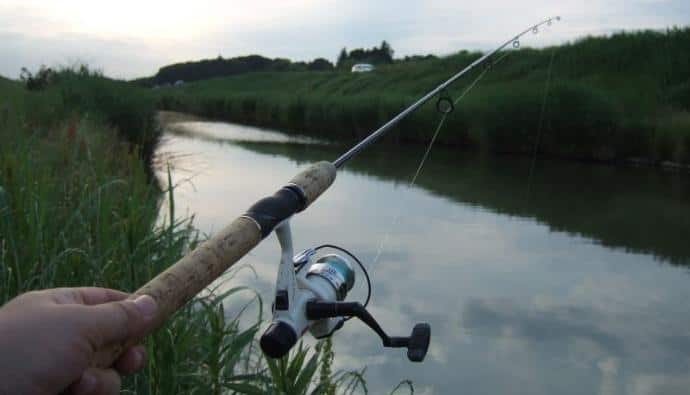
How Much Line to Put on a Spinning Reel
There are some factors to consider when deciding how much line to put on your spinning reel. In this section, we will break down everything that you need to know about putting a line on your spinning reel.
Let us start by discussing why spinning reels are popular among anglers.
Why Spinning Reels Are Popular
There are four different types of fishing reels which are spin cast reels, spinning reels, fly reels, and baitcasting reels. The spinning reel is the most popular of the four fishing reels due to the following reasons.
- It is very easy to use and operate. Spinning reels have an open-face design that enables anglers to set up their tackle and cast without trouble.
- The reel is located beneath the rod, which gives you better control while casting.
- Spinning reels come with more line capacity than other reels. It also comes with an additional spool, which ensures that your line moves freely. This also allows you to change your line.
Choosing Your Fishing Line
Before measuring how much line you need to put on your reel, it is important that you choose the right fishing line. Below are the classes of fishing lines that you can choose.
Monofilament Line
Monofilament lines are made of nylon polymer strands. They are quite flexible, making them suitable for bobber use and casting live bait.
Braided Line
Braided lines are loved by most anglers as a result of their durability. These lines are sturdy and do not break easily, which makes them suited for long casting distances. Braided lines sink slowly while maintaining high visibility, making them reliable for casting topwater baits.
Fluorocarbon Line
Fluorocarbon lines are great for fishing in clear water, as they are invisible underwater. While fluorocarbons are not as flexible as monofilament lines or sturdy like braided lines, their invisibility makes them desirable when fishing in calm waters.
Tips For Choosing A Fishing Line For Your Spinning Reel
Deciding on which fishing line suits your spinning reel depends on some factors. These are:
Your Target
The type of fish that you are trying to catch plays a role in determining which fishing line to choose. For small fish, you need a light fishing line like a monofilament fishing line.
On the other hand, larger fish require a stronger fishing line, like a braided fishing line. The fishing style and bait that you are using should also be considered.
The Location
The type of water body at your fishing location should be taken into consideration when choosing a fishing line. If you are fishing in saltwater, it is important to can withstand corrosion. A monofilament line is best for fishing in saltwater due to its abrasion-resistance properties.
Braided lines are also great for fishing in saltwater, as they are abrasion-resistant. If you are fishing in clear water, you might need the invisibility of a fluorocarbon line to avoid detection when casting.
Budget
Generally, the best fishing line for a spinning reel is braided line. This is because of its small diameter, which allows for long casting and little to no memory.
Braided lines are strong, which makes them durable and reliable for catching large fish. In addition, braided lines are suitable for both freshwater and saltwater fishing.
Knowing When to Replace Your Fishing Line
Fishing lines are affected by wear and tear after a while. It is important to know when to replace your line in order to keep your tackle working optimally. Below are signs that a line has been on the spool for too long.
- Discoloration and fading of the line materials.
- Frays and memory become noticeable.
- The line loses its flexibility and ability to stretch.
Once you notice any of these problems, it is important to change the line on the spool immediately.
How Much Line Does A Spinning Reel Need?
Before we discuss how much the right amount of fishing line to put on a spinning reel, it is essential to explain the importance of getting it right. Underfilling or putting too much line on it affects the effectiveness of your casting.
Putting too much line on your reel spool causes loop knots and wind knots. It also causes the line to slip off the reel, even when the rod is at rest. In some cases, the layers above the spool lip can come off and jam in the rod guides or get caught on the reel.
Fishing with an underfilled spool can be just as problematic as fishing with too much line. Underfilling your spool affects your fishing accuracy and casting distance.
A distance is created between the spool lip and line layers, which results in friction. Additionally, an underfilled spool makes it difficult to hold a trophy fish.
How Many Lines Should You Put On A Spinning Reel?
In order to get the right amount of line for your spinning reel, it is important that you know how to spool a line on a reel. The two things to consider when putting a line on your reel are the type of fishing line that you are using as well as the size of your reel.
Most spinning reels have specifications for monofilament lines and braid lines. Following the specifications will help you to get the right amount of line on your reel.
The line diameter should be considered when looking to spool a line. The lower the line diameter, the better it will fit on the reel’s spool.
The general recommendation when spooling a reel is to leave a gap of 1/8 inch between the fishing line and the edge of the spool. In other cases, you can leave a 1/4-inch gap. Leaving no gap between the line and spool will result in increased wind knots.
On the other hand, leaving too much gap will reduce your casting distance. For more customized preferences, considering your distance focus is important. Keep the line evenly tightened on the reel as you add it. This will ensure that you do not have to deal with knots when casting.
In the case that you intend to cast over a long distance, a gap of about 1/16 inch is sufficient. This will help you to reach a long casting distance while reducing wind knots.
If you do not have a distance focus, then simply leave a 1/8-inch gap. For the question of how many yards you need, checking the recommendation also helps. Today, most manufacturers recommend 200 yards of fishing line.
If you are using a braided line, adding a mono backing prevents slippage. The braid capacity of a spinning reel is typically more than that of mono due to the thinner diameter that braided lines possess.
Conclusion
Getting the right amount of fishing line on your reel can be the difference between landing a big catch or having a frustrating outing.
Knowing how to spool a reel is an essential skill that every angler must possess. Always consider the specifics of your fishing outing before choosing a line. A light fishing line is best for small fish, while thicker lines fit the larger fish.
Make sure to use the correct tools for spooling your reel. This will ensure that you put the line securely and correctly. In conclusion, make sure to check the specifications in order to know how many lines to put on your spinning reel.


 Facebook
Facebook YouTube
YouTube